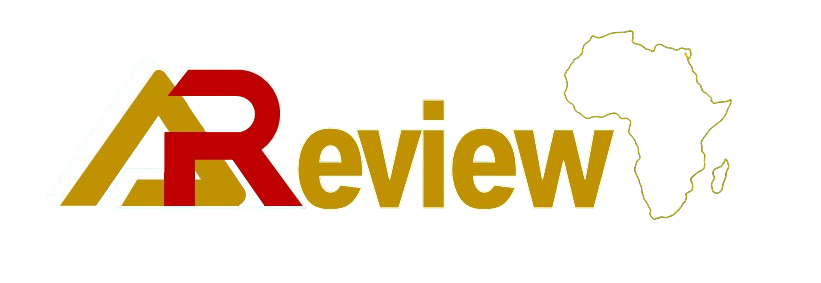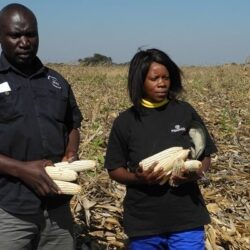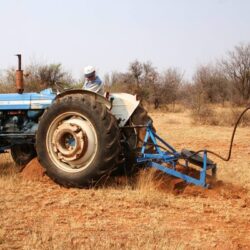A commercial venture into irrigated sugarcane on a 2 500ha parcel of land on the banks of the Luapula River, has taken shape in an astonishingly short time. The bush that covered this land has made way for fields of sugarcane, a year off harvesting, in three years.
The Great North Road makes its way from Zambia’s capital city, Lusaka, to the Tanzanian border over about 1 000 km, or, as the Zambians put it, 12 ½ hours driving time. About half way up this road, at Serenje, there is an option to head north east around the DRC and onto Mansa, capital of Luapula Province.
Even further east one arrives at Chembe on the Luapula river, a great expanse of water, which forms the border between Zambia and the Democratic Republic of the Congo (DRC), a journey of roughly 800km or 9 ½ hours, by road from Lusaka.
It is at Chembe that Mansa Sugar, a subsidiary of the Spin Ventures Group (SVG), is farming sugarcane under irrigation on 2 500ha of land. About 500ha of sugar under seven pivots will come into production from this, the first of a two phase operation.

SVG has had a presence on the continent for almost 100 years. From a Kenyan base, the company has expanded into Zambia during the last 20 years, and established wheat, soya and seed maize operations in the Mkushe block.
A business would need a healthy streak of the pioneering spirit to invest here, for beautiful though the landscape may be, and it is, Chembe is dauntingly far from any supply centre. A greenfields project is said by many to be the best way to start a farming venture, but a greenfields project in a greenfields region seems almost too intimidating to tackle.
Project leader at Mansa Sugar, Bhupendar Rathore, arrived here two and a half years ago, with a small team, to begin work in earnest. “When we first came, there was nothing here but bush,” says Bhupendar.
In this fast-changing development scenario, there are now eight senior managers at Mansa and a labour force of about 200. “By May next year we should have 1 000 people working here, which will include mill employees,” says Bhupendar. The sugar mill now in early construction is scheduled to start operating next May.
“At first we camped while we put a site together. We had to build the roads and put in power lines and transformers before we could start on agriculture.”


But as a priority, a hectare was cleared to plant the first seedlings, grown from tissue culture. “From a hectare of seedlings, you can multiply to 20ha of cane and from this 20ha you multiply to 200ha which is enough to plant 1 800ha,” he explains.
“We plant our own seed cane because it makes no sense to transport the kind of tonnages we need when we are 700km from the nearest sugar estate.”
The first seedling was planted in August 2015 and Mansa sugar expects to reap its first commercial harvest in April next year.
The grower has imported machinery and equipment from South America, India and South Africa, but bought John Deere tractors in Zambia.
South African agri-businesses looking for expansion opportunities in Zambia are at a definite advantage, because of the relatively shorter distances and travel times between the two countries.
THE IRRIGATOR – AGRICO
A solid reputation, and an agency in Lusaka, put SA irrigation manufacturer Agrico in the right place at the right time, to make, and win, the bid to supply the Mansa Sugar project’s irrigation systems. Agrico has designed, manufactured and installed the pivots at Mansa. Helped by shallow gradients, the Mansa pivots cover anything from 65ha to 80ha and they are supremely impressive.

This kind of large-scale irrigation agriculture needs advanced systems in both hardware and software says Alfred Andrag, Agrico’s operational director. “We manufacture much of what goes into the pivots ourselves, so we have the necessary control on standards. Our software allows crop managers to adjust [water] delivery over the internet, from mobile phones, tablets or computers which cranks up efficiencies for farmers,” says Alfred.
Variable speed drive (VSD) pumps run on demand rather than at continuous maximum capacity and may be remotely tweaked.
It’s easy to see why these pivots make such a difference to the operation. Irrigation provides a kind of crop security; higher yields, insurance against drought in the wrong season, and a reliable water supply system unaffected by labour problems. Then the overhead spray creates a cooling microclimate for the crop when temperatures get too high for photosynthesis.
Niel Davis, Agrico’s engineer and supervising manager in Zambia, a man of prodigious energy, impressive credentials and a ton of experience, has kept follow-up services to a high standard on this project. Indeed, so pleased is SVG’s Zambian management team with Agrico’s work that it has asked the company to put in the irrigation systems for phase two of the project, another 2 500ha of irrigated sugarcane, due to begin at the end of the year. There will be 990 irrigated hectares under pivot on phase 2 for which Agrico will supply six 80ha pivots and six 85ha pivots.

CONDITIONS FOR SUGARCANE
Sugar is considered a tropical crop and needs reasonably high temperatures, no frost and rainfall of between 1 100 mm to 1 800 mm a year. The temperatures along this stretch of the Luapula River range from a minimum of 8°C to a maximum of around 36°C. The dry season, which can last for up to seven months, usually breaks at the beginning of December.

“The pattern is about 15 days of rain in December, more or less continuous rain in January and February and then a tapering off in March and April,” says Bhupendar. The average annual rainfall at Chembe is 1 100mm, which is at the lower end of the crop’s requirement. Like many other crops, the timing of the rainfall event is more important than the season’s average rainfall.
“When you plant depends on the crop’s cycle length. We chose 12 month varieties which we plant in April, but with irrigation you can plant any time of the year,” says Bhupendar. “If you plant in winter it takes a little longer to germinate, but you can break dormancy with urea by dipping the setts into a urea solution.”
The sandy clay loam soils of the area fit into the soil texture requirements for sugar, but these soils are very acid with a pH of 4 which is not ideal for cane. “We apply dolomitic lime at 4t/ha just to get the pH up to 5.5, which is still short of the optimum 6.5.”
Soils in the tropics are typically leached and generally low in potassium, magnesium and calcium. The fertiliser mix at Mansa Sugar is tailored to compensate for the specific soil nutrient deficiencies and applied through fertigation, except for potassium which is always basally applied.

MARKETS
There is good demand for sugar from the Zambian market, and even stronger demand from the DRC, says Bhupendar. Lubumbashi, the DRC’s second largest city, is a mere 4 ½ hours drive from Mansa which means that transport costs will be low.
For Zambian farmers, who pay significant amounts of money to transport machinery and fertiliser into the country, this kind of proximity to market is a real advantage.
At an African Agri-Investment conference in Cape Town last November, the honourable Sebastian Kapulande, MP for Luapula Province, said that Africans, in general, and Zambians specifically, needed to keep value-adding in the country. This, said Kapulande, would grow economies in a real way. The export of unprocessed products and materials was the export of jobs, something no African state could afford to do, he said.

The Mansa Sugar project fulfils the criteria for growth and job creation.
It seems that the MP for Luapula may be creating an environment to ease the way for pioneers to develop big commercial farming operations here.




